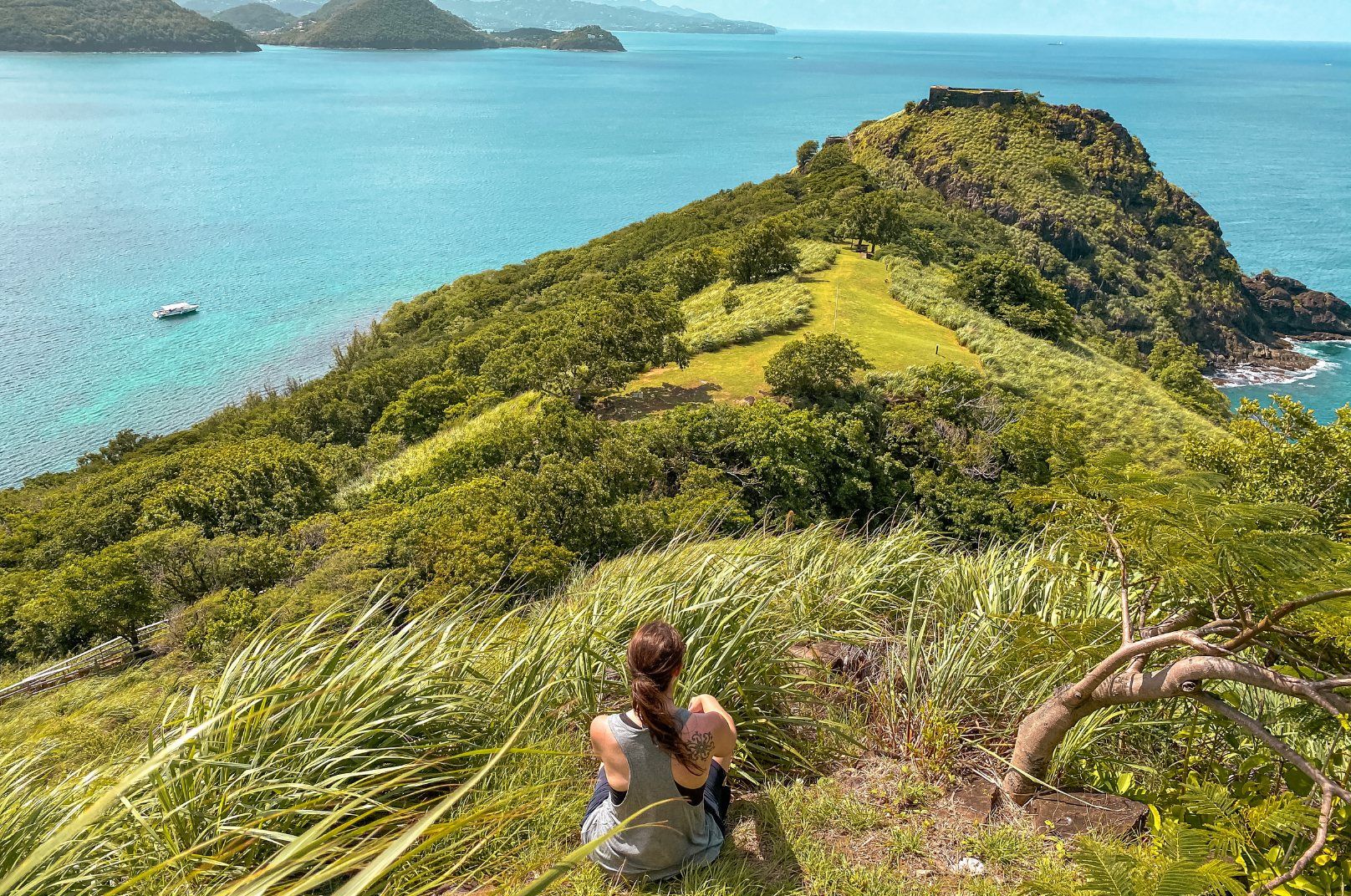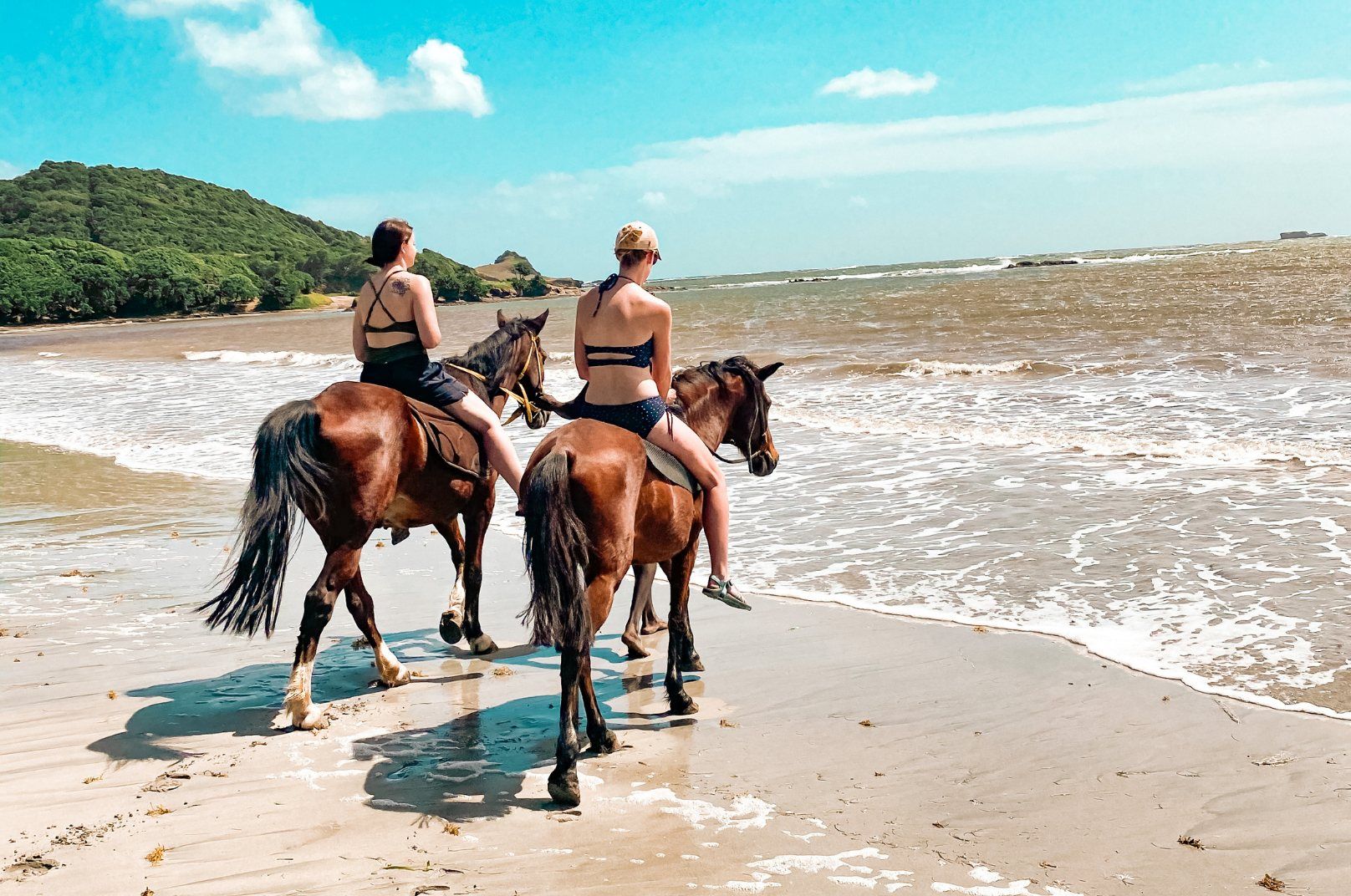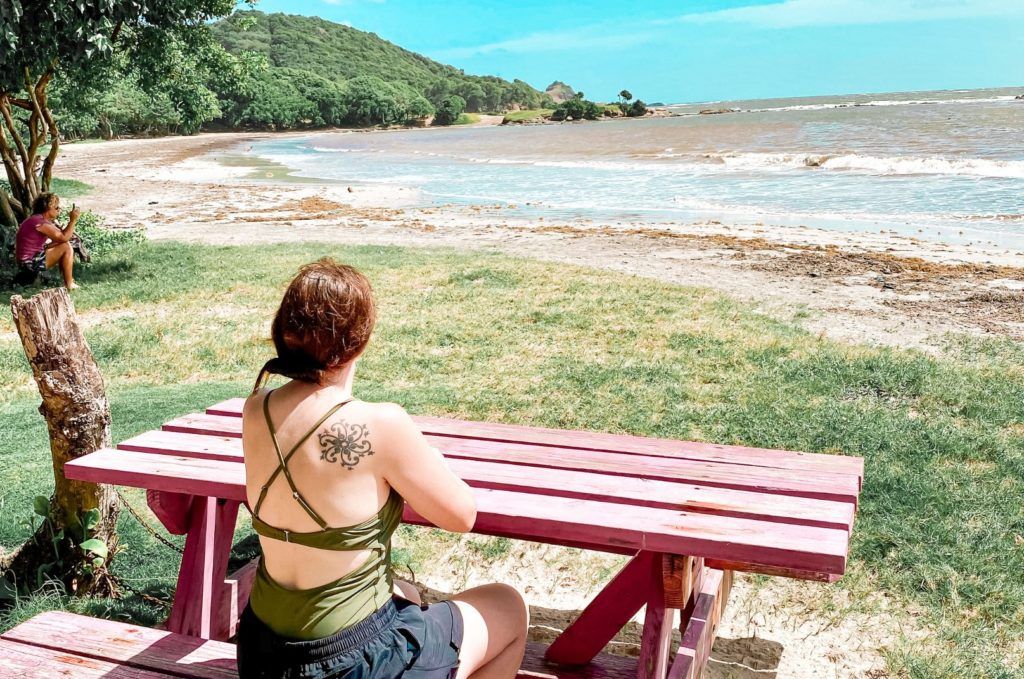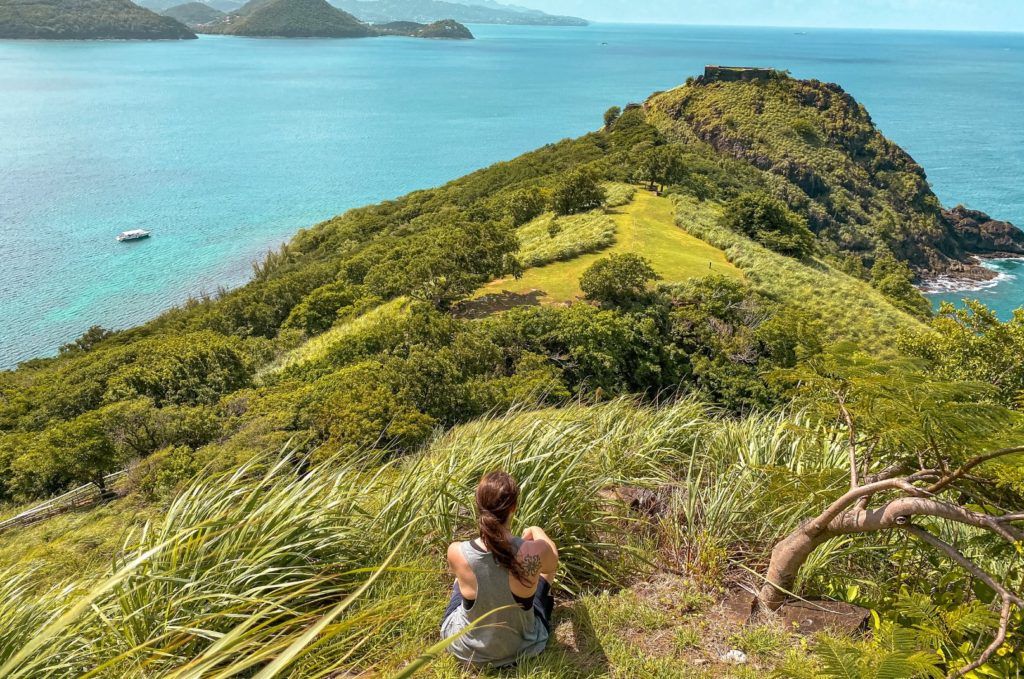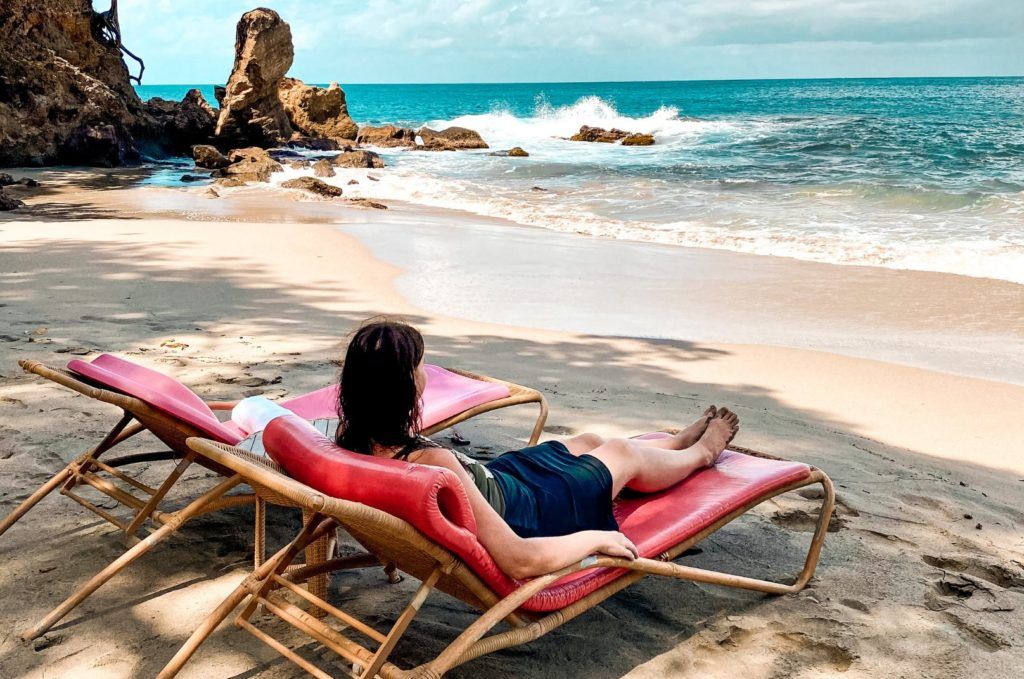St. Lucia is one of the most desirable islands to visit in the West Indies and the Caribbean! It has lush jungles to explore, stunning vistas, incredible hiking, picturesque villages, great water activities, and stunning resorts, hotels, and vacation homes. Whatever kind of adventure you want to have here, this travel guide has everything you need for planning a trip to St. Lucia!
St. Lucia
St. Lucia is known for incredible coral reefs, rum, Creole food, world-class resorts and beaches, jungle hikes that lead to sweeping views, and, of course, the famous Pitons. This country is a fantastic blend of African, French, and English culture, history, food, and architecture.
Ready to plan your trip? Then here’s everything you need to know for planning a trip to St. Lucia!

Know Before You Go
Many activities and excursions are weather-contingent, so book your guided activities at the beginning of your stay. This way, you’ll have time to reschedule if the weather rains you out.
Tap water is drinkable in St. Lucia, so if you don’t want to pay for water at restaurants, you can ask for ‘regular’ water, which is cold tap water. You can also order still or sparkling water, which will come in a bottle for a fee.
You should pre-book your transportation to and from the airport ahead of time to avoid the lines at the airport taxi stands.


Typical Costs When Traveling
Exchange Rate
The currency is the Eastern Caribbean dollar (EC$). Exchange rates are subject to fluctuations, so be sure to check this as your trip approaches. On average, EC$1 is equal to about £.28 British Pounds, $.37 U.S., €,31, and 2.45 Chinese Yuan.
No matter what kind of accommodation you stay in, you’ll pay a tourist accommodation fee. If your resort or hotel is less than $120/night, then you’ll pay $3/night. If your hotel or resort is more than $120/night, then you’ll pay $6/night. For Airbnb and VRBO bookings, you’ll pay 7% of the full cost of your stay.
Accommodation
A budget hotel room is around EC$190 a night (£53, $70, €60, 465 Yuan). A mid-range hotel will be about EC$540 a night (£150, $200, €170, 1320 Yuan). Higher-end accommodations start at EC$1350 a night (£380, $500, €420, 3300 Yuan) and go up from there.
Airbnb prices average around EC$400 a night (£110, $150, €125, 980 Yuan).
Check out the Best Hotels in St. Lucia and these Incredible Vacation Homes!
Food
Street food is relatively cheap between EC$5-10 (£1.40-2.80, $1.85-3.70, €1,55-3,10, 12.20-25 Yuan). Lunch at a local restaurant will be around EC$45 (£12.50, $17, €14, 110 Yuan). And a two-course evening meal will start at EC$120 (£35, $45, €37, 295 Yuan) and go up from there.
Budget around EC$20 per alcoholic drink (£5.60, $7.50, €6,20, 50 Yuan).
WHERE AND WHAT TO EAT IN ST. LUCIA

Transportation
Your transportation options around St. Lucia are hiring a taxi or renting a car. When considering renting a car, be aware that you’d be driving on the left side of the road, and the traffic patterns in St. Lucia are more of a free-for-all than the United States or Western Europe. Unless you’re very comfortable driving a car with different rules of the road than your home country, I would recommend using taxis.
A short taxi ride should be about EC$40 (£11.25, $15, €12,50, 100 Yuan), and a taxi ride from one end of the island to the other will be around EC$270 (£75, $100, €85, 660 Yuan).
Renting a car usually costs around EC$175 a day (£50, $65, €55, 430 Yuan). Uber and Lyft don’t operate in St. Lucia.
Other Expenses
I’d budget around EC$40 a day (£11.25, $15, €12,50, 100 Yuan) for entrance fees, tours, guides, snacks, tips, and souvenirs.
Visa, American Express and MasterCard are widely accepted at hotels, car-rental agencies, shops, and restaurants. Most places will quote you in U.S. dollars, and you can pay in US$ or the equivalent of EC$.
ATMs are available at bank branches and shopping centers throughout the island to get Eastern Caribbean dollars. Most hotels and resorts can also exchange money for you.
Tipping
Hotels – around EC$2 per bag for porters and EC$3 per day for cleaning staff.
Most restaurants add a 10% service charge. If it’s not included in the bill, tip 10% to 15%; if it is, it’s up to you whether you want to leave an additional tip.
Taxi Fares are usually fixed and tips are not usually expected; if service is excellent, a tip of 10% to 15% of the fare is appreciated.
Suggested Daily Costs
These budget estimates include eating and drinking out at least twice a day and a couple of excursions during your trip.
Lower End: EC$450 a day (£125, $165, €140, 1100 Yuan). Midrange: EC$750 a day (£210, $275, €235, 1835 Yuan). Higher End: EC$1650 a day and up (£465, $610, €515, 4035 Yuan).
Money Saving Tips
How to Prepare
Vaccinations
The Centers for Disease Control and Prevention (CDC) and World Health Organization (WHO) recommend the following vaccinations: hepatitis A, hepatitis B, typhoid, yellow fever, rabies, meningitis, polio, measles, mumps, and rubella (MMR), Tdap (tetanus, diphtheria, and pertussis), chickenpox, shingles, pneumonia, and influenza.
Passport Health has additional information on current vaccinations and diseases in St. Lucia, and I recommend visiting their website for the most up-to-date travel requirements.
Visas
Most Caribbean citizens don’t need a visa to enter St. Lucia if your stay is less than six months. Citizens of the EU (except Ireland), Iceland, Liechtenstein, Norway, and Switzerland can visit St. Lucia without a visa if staying less than three months. UAE citizens don’t require a visa for stays less than 60 days.
Citizens of North America, China, Australia, Russia, Brazil, Chile, Argentina, Uruguay, Guyana, Suriname, French Guiana, Tanzania, Malawi, Zambia, Namibia, Botswana, South Africa, Eswatini, and Lesotho can enter Saint Lucia without a visa if their stay is less than six weeks.
If you’re a citizen of another country, you might need a visa or visa-on-arrival to enter St. Lucia. You’ll want to check your country’s visa guidelines and requirements.
Your passport will need to have an empty page for your entry stamp and be valid for at least six months past your date of entry to St. Lucia.
Cruise ship passengers visiting St. Lucia for a day are exempted from obtaining visas.
iVisa is an incredibly helpful resource for obtaining visas. iVisa makes the usually complicated and confusing process of getting a visa easy. You fill out a simple online application, and then iVisa takes care of everything else.
Etiquette
At bars and restaurants, you may have to get the server’s attention rather than just waiting for them to approach. This is a cultural difference, not a sign of poor service.
Greetings are usually verbal rather than a handshake or peck on the cheek. It’s polite to greet everyone upon entering a taxi, shop, restaurant, or boat with a ‘good morning’ or ‘good afternoon.’
For Planning Your Trip
When To Go
St. Lucia’s High Season is from November to April because of the incredible weather in the mid-70s (24°C) and mid-80s (29°C). All tours, businesses, and restaurants will be open with regular hours of operation. But accommodation prices can be double what they are the rest of the year, and tourist numbers and cruise ship dockings are at their highest.
The Shoulder month is May. The weather will still be mostly dry, crowds will lessen after April, and businesses and tours should still be open.
The Low Season is from June to October during the rainy season. Hurricanes and tropical storms can occur, especially in August and September. Many shops, restaurants, and tour operators close or reduce their hours during these months, but you can get some great deals on hotels and resorts that would be out of your price range in the peak months.
St. Lucia is one of the Best Destinations To Visit In December!
What To Pack
In addition to your usual travel essentials, you’ll want these items:
Day pack, water bottle, and hiking shoes since you’ll probably be hiking at least once.
Rain jacket because morning or afternoon showers are common.
Swimsuits and sandals for most of your days and activities.
Bug spray and sunscreen. The mosquitos can be vicious in the mornings and evenings, and you’re close to the equator, so the sun’s rays will be shining directly on you.
Electrical outlets in St. Lucia are Type G. So if you’re from the U.K., you won’t need an outlet adaptor. But U.S., European, and other travelers will need an adaptor.
What To Wear
St. Lucia’s climate and culture mean the dress code is very casual. Many visitors to the island never change out of their swimsuits and sandals. You’ll want a sarong or cover-up for your swimsuit when shopping, dining, or riding in a taxi. And men should always wear a shirt inside.
Bring fast-drying clothes and shoes because of the humidity and rain showers. When hiking or staying in remote or rainforest accommodations, you might want long sleeves and moisture-wicking leggings to keep the mosquitos at bay.
Have you been to St. Lucia? Comment below with anything you’d add to this guide for planning a trip to St. Lucia!

Frequently Asked Questions
How much does a trip to St Lucia cost?
The average daily costs for a trip to St. Lucia are:
Budget Trip: $165/day
Midrange: $275/day
High End: $600/day
What is the best time of year to go to St Lucia?
The best time to visit St. Lucia for the best weather is November to April. These Winter and early spring months have sunny days in the mid-70s and mid-80s.
The best time to visit St. Lucia on a budget is June – October, during the rainy season when crowds and prices are at their lowest.
How many days do you need in St Lucia?
A week is the perfect amount of time to spend in St. Lucia. This will give you plenty of time to explore the island, have beach days, and enjoy the luxury of your hotel, resort, or vacation home. I recommend flying in and out of St. Lucia on Sunday because traffic is at its lowest for airport transfers, and many restaurants, shops, and attractions are closed on Sundays.
What should I know about St Lucia?
1. The currency is the Eastern Caribbean dollar (EC$). Exchange rates are subject to fluctuations, so be sure to check this as your trip approaches. On average, EC$1 is equal to about £.28 British Pounds, $.37 U.S., €,31, and 2.45 Chinese Yuan.
2. Visa, American Express and MasterCard are widely accepted at hotels, car-rental agencies, shops, and restaurants. Most places will quote you in U.S. dollars, and you can pay in US$ or the equivalent of EC$.
3. ATMs are available at bank branches and shopping centers throughout the island to get Eastern Caribbean dollars. Most hotels and resorts can also exchange money for you.
4. Tap water is drinkable in Saint Lucia, so if you don’t want to pay for water at restaurants, you can ask for ‘regular’ water, which is cold tap water. You can also order still or sparkling water, which will come in a bottle for a fee.
5. Electrical outlets in St. Lucia are Type G. So if you’re from the U.K., you won’t need an outlet adaptor. But U.S., European, and other travelers will need an adaptor.
When should you not go to St Lucia?
St. Lucia’s rainy season is from June to November. During these months, there will be a chance of rain every day. The summer and fall is also hurricane season, which peaks in September and October. But the island rarely gets directly hit by a storm or hurricane, so you can score some budget accommodation and tour deals during these months.
Is St Lucia a safe place to visit?
I felt very safe during my entire trip to St. Lucia. The country has a low crime rate, but, as with any destination, you need to take precautions to keep yourself safe. Don’t walk by yourself at night, stay in a secure and well-located hotel or vacation home, use slash-proof, lockable, and RFID-protected bags and purses, and always have a charged cell phone with you.
Is food expensive in St. Lucia?
Street food is relatively cheap, between $2-4. Lunch at a local restaurant will be around $20. A two-course evening meal will start at $45 and go up from there. You’ll want to budget around $7.50 per alcoholic drink.
Is it safe to swim in St. Lucia?
Every beach on the island, including those that are part of the top resorts, is open to the public. Beaches on the eastern side of the island are considered safe for swimming, though you should still take all possible precautions. Beaches on the island’s western side are not safe for swimming, but these beaches are fun to explore via jeeps or horseback.

Shop My St. Lucia Essentials

This guide for planning a trip to St. Lucia is not a sponsored post, and, as always, the thoughts and opinions expressed in this guide for planning a trip to St. Lucia are entirely my own. Some of these links in this guide to planning a trip to St. Lucia are affiliate links, and, at no cost to you, I may earn a small commission.
November 10, 2020
 Destinations
Destinations Packing
Packing Travel Tips
Travel Tips
 Photography
Photography Points & Miles
Points & Miles Credit Cards
Credit Cards
